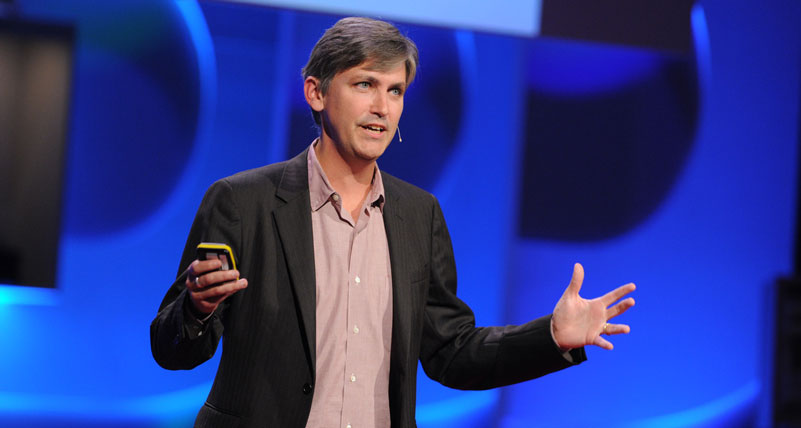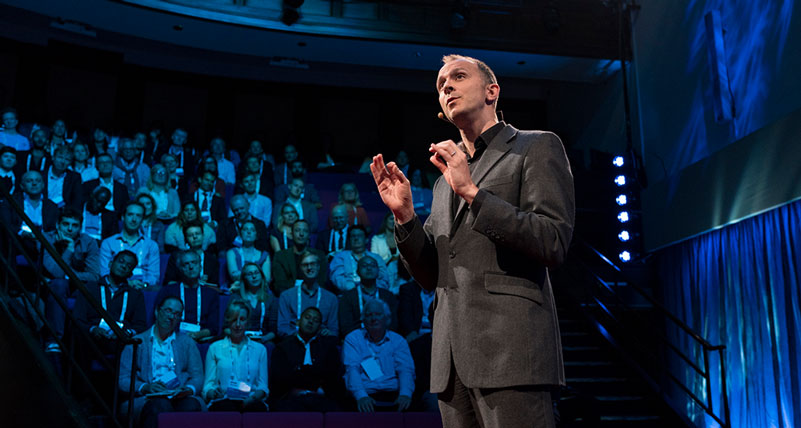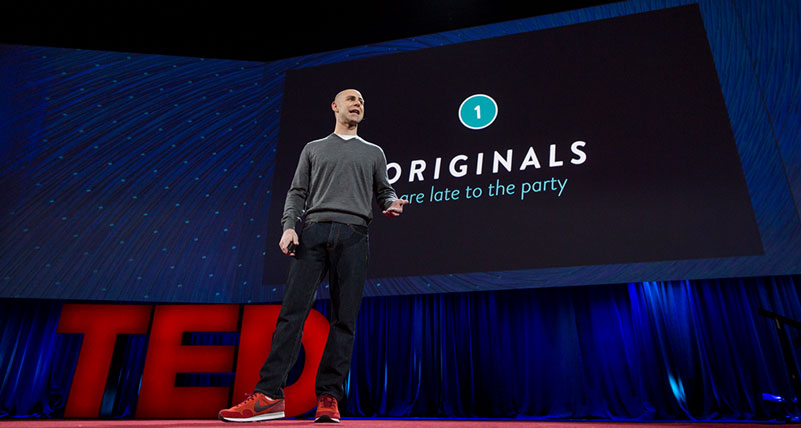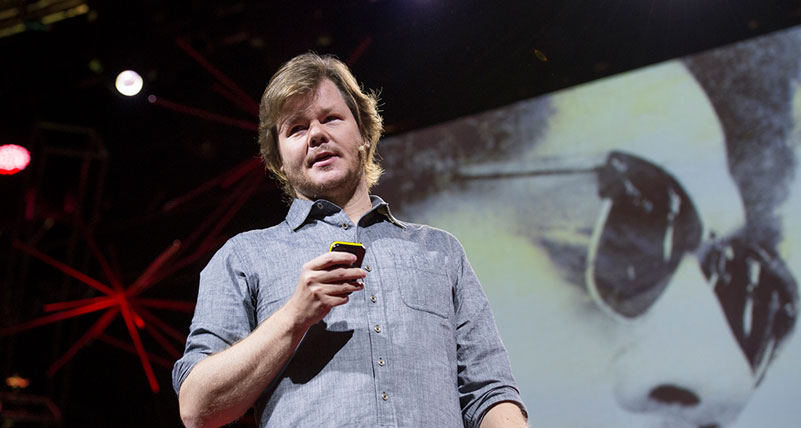
At the EICC, we believe in the power of great ideas. But where do they come from, and how can they be nurtured to spark positive change? We explore the very idea of ideas – and the role that attending conferences can play in inspiring them.
It’s been a year full of ideas at the EICC. July 2019 saw 1000 delegates hosted at the EICC for TEDSummit, the event that gathers members of the TED community to a beautiful location for five days of discussions, brainstorms, workshops and more. TED is founded on great ideas, and devoted to spreading them through concise, transformational talks from some of the world’s most intellectually engaged thinkers. Their slogan ‘Ideas Worth Spreading’ aligns perfectly with the mission of the EICC: to create an environment which inspires ideas that change the world.
But how do great ideas come to be, and how do we create an environment that allows them to grow? TED’s video playlist ‘Where do ideas come from?’ brings together some of the world’s top minds to explore these questions, offering inspiration in how to foster and nurture innovation. Here are some of the take-home messages.
1. Reimagine ideas

In his TED Talk ‘Where good ideas come from’, author and media theorist Steven Johnson explains how inspiration can be found in reimagining our attitude towards ideas. Despite the language we typically use to describe great ideas (flash, eureka, light bulb moment), ideas don’t always emerge that way. It doesn’t have to be thought up in a single miraculous moment. Nor does it have to be a brand-new and pristine: more often than not it is “cobbled together” from many different thoughts and insights. Johnson gives the example of Charles Darwin: despite claiming that the theory of evolution came to him in one flash of inspiration, an examination of Darwin’s meticulously detailed journals suggests otherwise. Darwin had his full theory for many months before his alleged epiphany – he just hadn’t put the pieces together.
“If you really look closely, most overnight successes took a long time.” – Steve Jobs
An idea is a network, explains Johnson – a newly organised connection of neurons in the brain that bring together an array of information and experience. Great ideas and innovation often come from more than one source or person, and connecting and collaborating is key: “chance favours the connected mind.” Here at the EICC, we believe in the importance of coming together and having discussions; relaying ideas to others and allowing new ones to grow. We continue to nurture these rewarding opportunities and advocate for the power of conferences in sparking change.
2. A change of scenery

When it comes to generating ideas, stepping outside your usual environment can work wonders. Economist Tim Harford’s TED Talk ‘How frustration can make us more creative’ explores findings from many fields that suggest the benefits of working outside your comfort zone. For example, in a social psychology experiment, groups of participants were given a murder mystery problem-solving task: some groups comprised of four friends, and some comprised of three friends and a total stranger. The results found that the group with a stranger present worked significantly more effectively, finding the answer 75% of the time compared to 50% in the groups of friends. Working outside your comfort zone – being put in an unfamiliar position – can actually have a positive effect on work.
“Disruptions help us become more creative,” says Harford: they challenge us to make new connections and think in different, more original ways. Whilst attending conferences may be a daunting and unfamiliar prospect for some, they can present excellent opportunities to work creatively outside of the typical office environment. Attending a variety of talks, coming together with new people and gaining different perspectives can be a fantastic way to spark ideas.
3. You don’t have to be first

“It’s much easier to improve on somebody else’s idea than it is to create something new from scratch.”
It seems intuitive that great ideas must be original. But surprisingly, the most successful innovation is not always the first of its kind. Organisational psychologist Adam Grant’s TED Talk ‘The surprising habits of original thinkers’ explores the common behaviours of people whose innovative ideas change the world. “To be original you don’t have to be first,” says Grant. “You just have to be different, and better.” Facebook wasn’t the first social media platform, and Google emerged years after the original search engine. By not rushing to the market, these companies were able to learn from the mistakes of their forerunners; as Grant explains, “it’s much easier to improve on somebody else’s idea than it is to create something new from scratch.”
This claim is supported by evidence: a classic 1993 paper from Golder and Tellis shows that trend followers are more likely to succeed in the long run than the original pioneer of the idea. A study of 500 brands in 50 product categories showed a failure rate of 47% for ‘first movers’, compared to 8% for ‘fast followers’. Perhaps the best ideas emerge not from trying to be unique, but from spotting the potential for ideas to be built upon. Bringing together the brightest minds in the field, conferences can be an excellent facilitator of this kind of cumulative, collaborative innovation, which over the years we have refined at the EICC.
4. Don’t be afraid to remix

Filmmaker Kirby Ferguson believes every idea is a remix. In his TED Talk ‘Embrace the remix’, he says that the techniques of “copy, transform and combine” are a better way to approach creativity; that we shouldn’t be afraid to borrow, adapt and recombine the ideas of others. Ferguson points out that Bob Dylan, undoubtedly one of the greatest artists of the 20th century, was all too familiar with this concept. Dylan replicated melodies from traditional folk songs, reimagined them and made them his own – in fact, it’s been estimated that two-thirds of Dylan’s songs were based on borrowed melodies. It could be that Dylan had heard these songs and unconsciously reinterpreted them, but it seems more likely that it was purposeful. By transforming and modernising them, he became “the voice of a generation”. As his hero Woodie Guthrie advised, “Take a tune, sing high when they sing low, sing fast when they sing slow, and you’ve got a new tune.”
Ferguson says that this technique does not promote copying or mediocrity, but gives us great power. This comes from realising we are not islands: we are dependent on other people around us, and the whole history of creativity and innovation that preceded us. “Our creativity comes from without not from within,” he says. “Admitting this to ourselves is a liberation from our misconceptions, and an incentive to not expect so much from ourselves – and to simply begin.” Here at the EICC, we believe in the power of reimagining and cumulative learning. Events and conferences can be a fantastic opportunity to challenge pre-conceptions, break patterns and open the mind to new ideas.
5. Protect yourself

Eat Pray Love by American author Elizabeth Gilbert sold over 10 million copies worldwide and was adapted into a Hollywood blockbuster starring Julia Roberts. In the wake of this astounding success, Gilbert sought a method for continuing to create after accepting that Eat Pray Love is likely to be the greatest achievement of her career. Gilbert advocates for a “protective psychological construct” – a distance between her work and her anxieties about the perceived reaction to that work. In her TED Talk ‘Your elusive creative genius’, she explores historic habits for managing the “inherent risks of creativity.” In Ancient Rome for example, creativity was seen a divine gift; a ‘genius’ was not a highly intelligent individual but a mystical creature that lived in the walls of artists and helped them with their work. This built a shield in two ways: that the artist can’t take full credit for their work when it succeeds, and therefore remains modest; and if the work is a disaster, they don’t have to blame themselves entirely.
Being creative doesn’t need to be a torturous internal affair: it can be a “peculiar, wondrous, collaboration and conversation.”
Following the Renaissance and the beginning of rational humanism, we began describing individuals as being geniuses, rather than having geniuses. Gilbert believes this shift in thinking puts more pressure on the human psyche and leads all too often to either egotism or feelings of total failure. While she isn’t asking us to believe in mystical creatures living in the walls, nor to retract hundreds of years of human progress, Gilbert points out that it may be useful to reimagine creativity and relieve individuals from some of that anxiety. Being creative doesn’t need to be a torturous internal affair: it can be a “peculiar, wondrous, collaboration and conversation.” You don’t need to be digging inside you all the time for that great inspiration or idea – be glad when it comes, but know that even if it doesn’t, you can still keep putting in the work.
“Don’t be afraid – just do your job,” says Gilbert. “Keep showing up.”
Watch the videos
You can view the entire 'Where do ideas come from?' playlist on the TED website